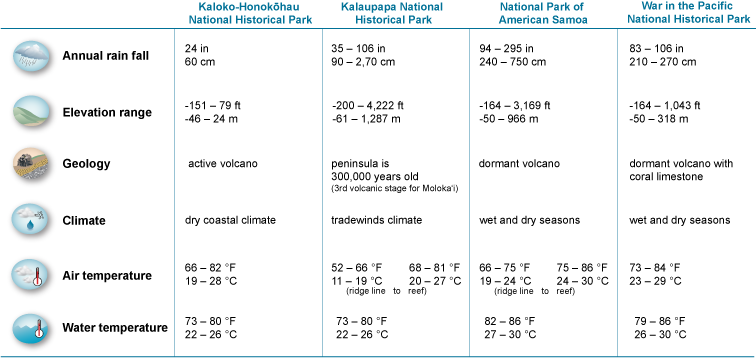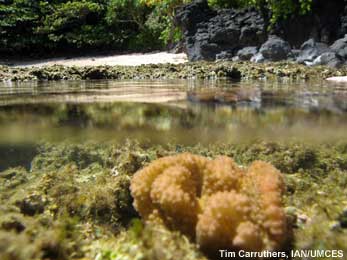 At first glance, it may appear that corals and fish are the most important pieces of a coral reef community. Actually, it takes many organisms to make healthy coral reefs such as coralline algae, turf algae, stony corals, soft corals, invertebrates, and macroalgae—just to name a few.
At first glance, it may appear that corals and fish are the most important pieces of a coral reef community. Actually, it takes many organisms to make healthy coral reefs such as coralline algae, turf algae, stony corals, soft corals, invertebrates, and macroalgae—just to name a few.Monitoring these organisms helps scientists understand how changes in human activities and climate are impacting reefs. Scientists measure the abundance of organisms on a reef by surveying how much space they occupy when viewed from above. This measurement is known as cover, or the area occupied by a particular organism on a reef and is recorded as a percentage (percent cover).
Changes in cover can indicate changes in the benthic (sea floor) community resulting from natural or human caused influences. For example, an increase in macroalgae cover from 10% to 25% might indicate that there are fewer herbivores on the reef to eat the algae. Perhaps the number of herbivores was reduced by overfishing or disease. Alerted to the fact that herbivores may be declining, scientists can then investigate the cause. Scientists often use changes in cover over time to monitor the overall health of a coral reef.
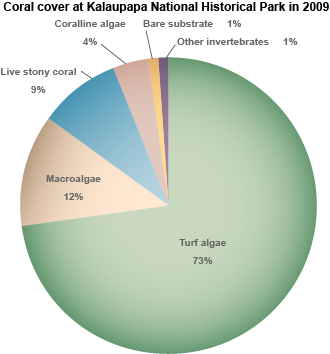
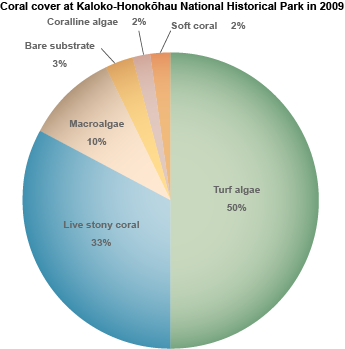
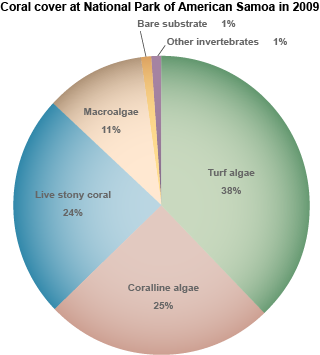
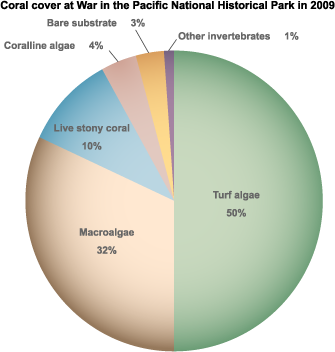
Not every reef contains the same composition of organisms. For example, turf algae covers about 73% of the reef at Kalaupapa National Historical Park—the most of all four parks. This is because turf algae grows very well along coasts with high waves, such as the coasts of Kalaupapa National Historical Park. What other differences do you see between the coral reefs in the Pacific Island Network parks?
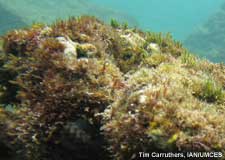
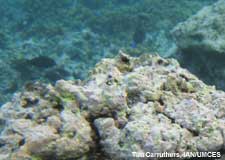
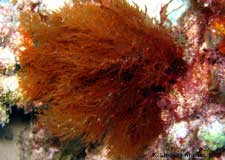
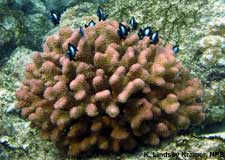
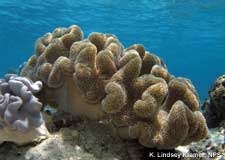
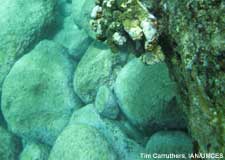
Though all four of these national parks with coral reefs are on islands in the Pacific Ocean, they have different geologies and climates. Some islands have active volcanoes, some are influenced by tradewinds, and others have wet and dry seasons. These factors influence how the coral reefs in each park develop and grow. For example, parks that receive more rain fall may have more erosion and runoff. This runoff leads to more sedimentation on coral reefs.
